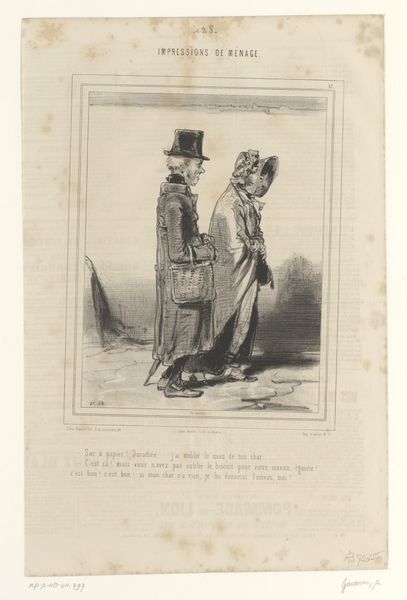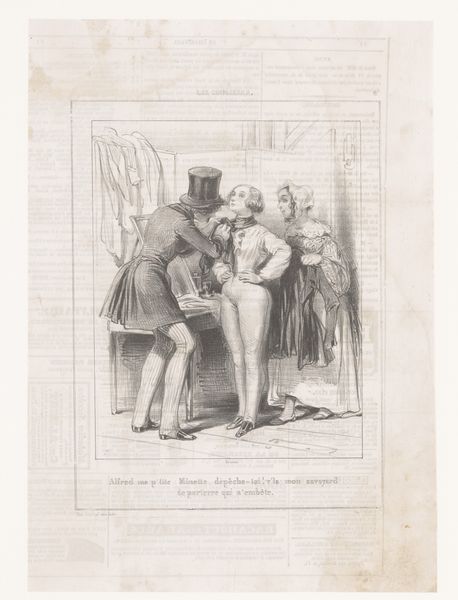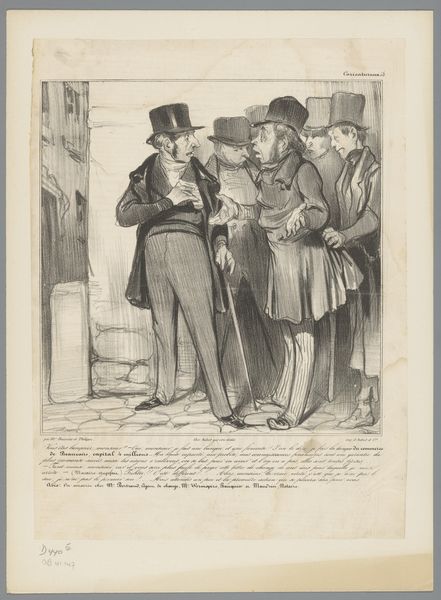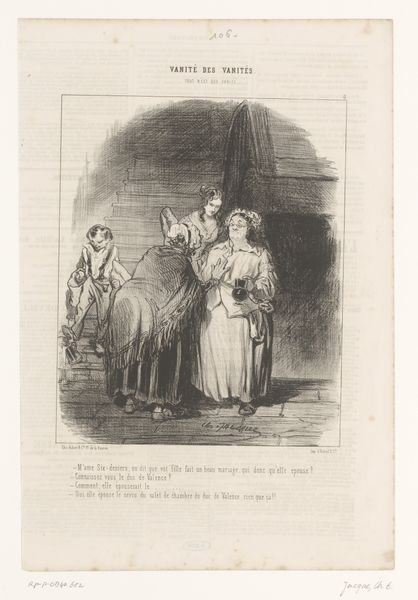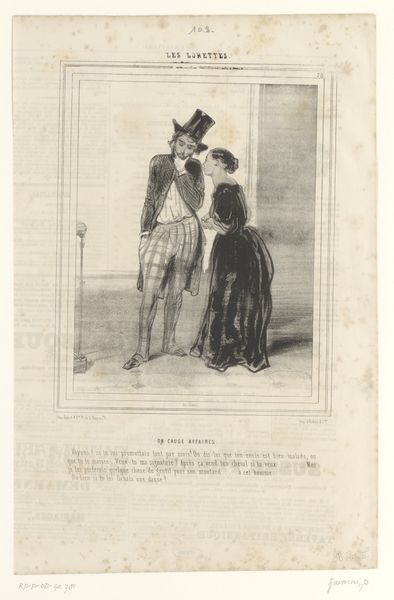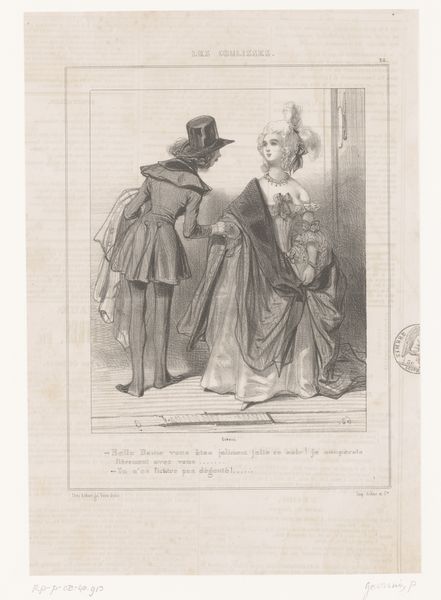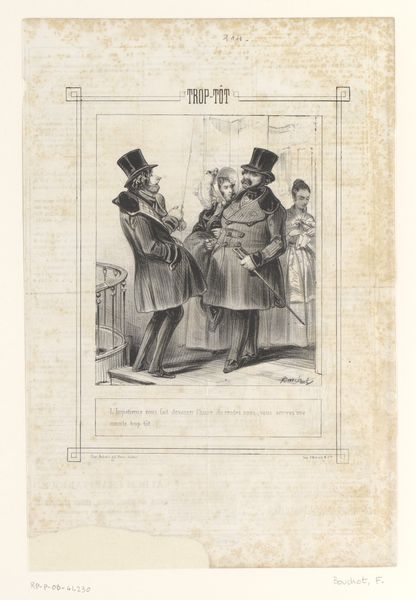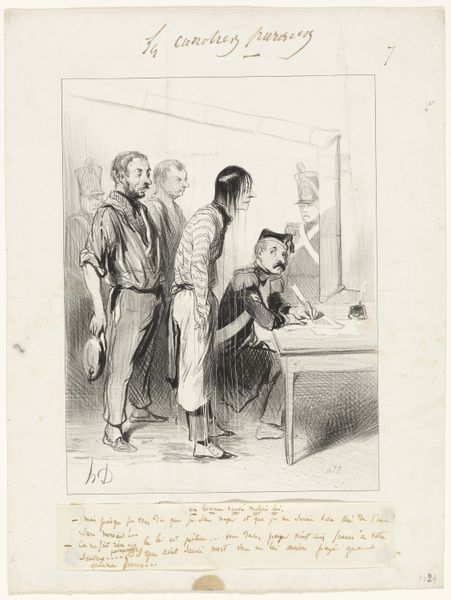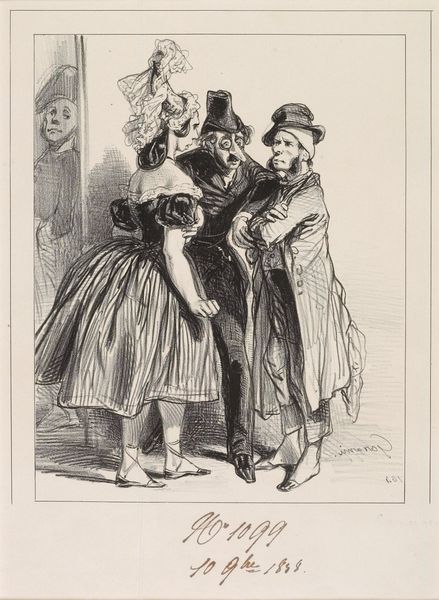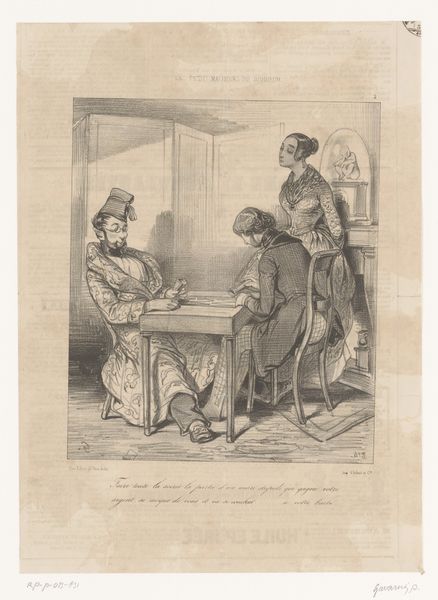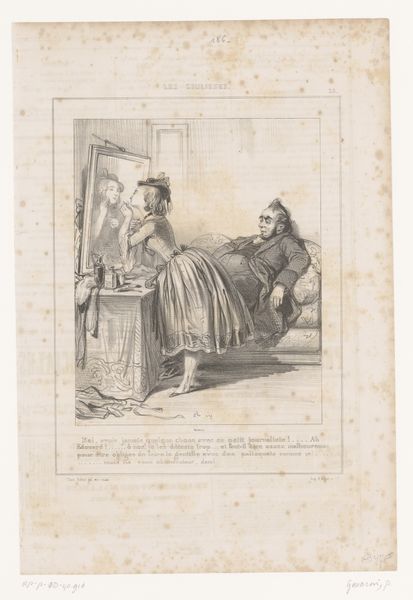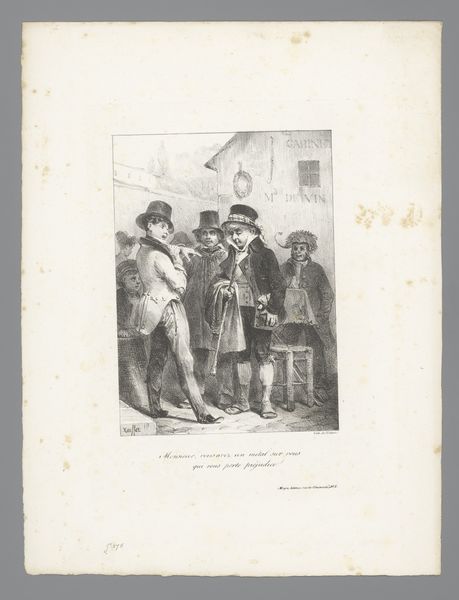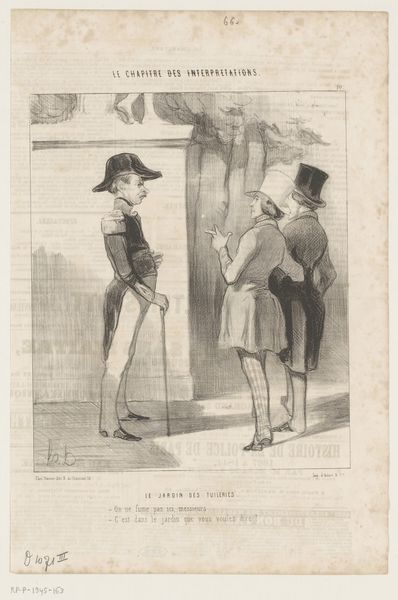
drawing, lithograph, print, pen
#
drawing
#
aged paper
#
toned paper
#
light pencil work
#
quirky sketch
#
narrative-art
#
lithograph
# print
#
caricature
#
pencil sketch
#
sketch book
#
figuration
#
personal sketchbook
#
romanticism
#
sketchbook drawing
#
pen
#
cityscape
#
pencil work
#
genre-painting
#
sketchbook art
Dimensions: height 361 mm, width 243 mm
Copyright: Rijks Museum: Open Domain
Editor: This lithograph from 1841, titled "Vrouw staat tussen twee rokende mannen in" by Paul Gavarni, really captures a slice of 19th-century life. The figures have such distinctive expressions. How do you interpret this work, especially considering the context of its time? Curator: I'm immediately drawn to the almost theatrical presentation of these three figures. Gavarni masterfully uses the then-popular medium to depict societal tensions and urban observation. What do the symbols – the pipes, the clothing – tell us about their social standing? Consider the woman’s position between these men; does it convey a specific relationship, or perhaps a societal commentary on gender roles of the era? Editor: That's fascinating. I hadn't considered the pipes as social indicators. To me, the woman seems almost burdened, caught between these two figures. Curator: Precisely! That emotional weight is critical. Look at the slight droop of her shoulders, her downcast gaze, compared to the men's outward facing poses, both quite self-assured. The smoking becomes more than just a casual habit. Doesn’t it suggest a power dynamic, a social performance? How does Gavarni's style enhance these subtleties, conveying emotional and psychological layers within a seemingly simple genre scene? Editor: I see it now. It’s almost as if the smoke is an oppressive presence, emphasizing her feelings of being trapped or overlooked. Curator: Exactly! Gavarni provides a glimpse into the unspoken realities of urban life. These scenes often unveil social commentaries that resonate even today. Editor: I’ll definitely look at other 19th century artworks differently now, paying more attention to how everyday objects can be such potent signifiers. Curator: I’m glad to see that this artwork helped unlock new paths for art appreciation.
Comments
No comments
Be the first to comment and join the conversation on the ultimate creative platform.
